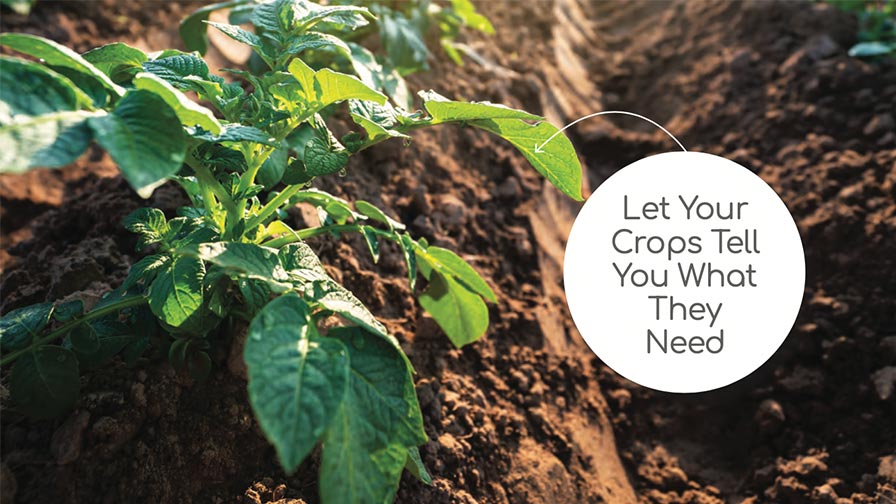Biopesticides Flaunt Flexibility for Produce Growers
From stricter regulatory guidelines to rising costs and resistance issues, there are several reasons why growers of specialty crops are increasingly integrating biopesticides into their integrated pest management (IPM) programs, Chris Judd, Global Vice President of Marketing with Certis Biologicals, says.
For example, many of the biologicals made by Certis can be easily tank-mixed or rotated with other bio-based products and conventional chemistries, according to Judd. They offer low re-entry intervals (REIs) and preharvest intervals (PHIs), and many are exempt from residue tolerance.
“This flexibility allows biopesticides to fill gaps created by limitations on the use of conventional pesticides due to worker safety, MRLs (maximum residue limits), or supply chain issues,” Judd says.
Organic Materials Review Institute (OMRI) Listed and National Organic Program (NOP)-approved products are examples of further flexibility for growers who are growing organic and conventional acreage, he adds.
Another reason specialty crop growers are increasingly adopting the use of biologicals is their effectiveness as a tool to manage resistance, Judd says.
“Biopesticide modes of action tend to be multifaceted in comparison to conventional pesticides, which usually target a specific enzyme or metabolic site of the pest or pathogen,” he says. “Rotating biologicals with synthetics reduces the risk of resistance to any one mode of action. In most cases, pests or pathogens that have developed resistance to conventional chemistries after repeated use remain susceptible to biopesticides with proven efficacy to help those growers regain control and protect their crops and livelihoods.”
TRUST ELEMENT
Judd always encourages growers to look at the data on biologicals.
“We’ve conducted thousands of field trials that demonstrate the usefulness and effectiveness of biologicals in different regions, with different pests on different crops,” he says. “Our evolving understanding of environmental and human safety, regulatory limitations on crop protection practices, and increasing sophistication of IPM systems have brought about a rethinking of how best to evaluate biologicals as an integral component of crop production, not simply as stand-alone inputs in direct competition with conventional chemicals.”
Suppliers of biologicals test the performance of their products via reputable universities and consultants from contract research organizations (CROs), according to Kemin Technical Services Manager Michael Hull.
“We establish strict trial protocols that closely resemble real-life application by growers,” Hull says. “Trials provide reliable data that help give the recommended use rates and understand the behavior of products in a specific crop and region. Growers should always research to understand more about the suppliers they buy from and select the most reliable ones.”
While some biological products work very well, according to Michel Tremblay, Vice President of Marketing with BioTepp, their timing of use is very often different than the standard conventional chemical pesticides.
“Users of biological products have learned how and when to apply biological products and are getting very good results,” Tremblay says. “Very often the biological products are not as fast acting, but most of the time they have a soft mode of action.”
COST FACTOR
Biological products are not too expensive when used appropriately in an IPM program, Hull says. Growers should utilize this category of crop protection differently than conventional chemistry, he adds.
“It is essential to understand that the best way to use biological products is to use them as a preventive approach before pests reach their economic threshold. When used at the beginning of the season, a biological product is usually applied at a lower label rate and, therefore, will cost less,” Hull says. “However, when they are applied to replace conventional chemistries during the peak of an infestation, they become too expensive because the highest-labeled rate is often used. An effective scouting and IPM program can include biological use at the beginning of the season to prevent future infestation and may lower the cost of pesticide use overall.”

A bumblebee carries the Bee Vectoring Technologies all-natural plant protection product (Vectorite with CR-7) directly to a bloom.
Photo courtesy of Bee Vectoring Technologies
ARE THEY EFFECTIVE?
Biological products reduce the pest population to such a level, Tremblay says, that it is easier to control it with conventional chemical products. “Used in a program with conventional chemical pesticides, biological insecticides reduce chemical residue, lower the risk of resistance of the pests to chemical pesticides, and improve the overall control of pests,” Tremblay says.
According to Hull, it is not a matter of whether biologicals work better than conventional chemistry.
“They both have their own way of controlling pests,” he says. “However, growers should remember that most biological products should be used as a preventive approach before the economic threshold and use conventional chemicals if pests reach their threshold.”
In the end, there is never one “silver bullet,” according to Ian Collinson, Sales Manager with Bee Vectoring Technologies.
“Biologicals can be a part of an integrated disease and pest management program. Our biofungicide can be used at the start of a bloom period for crops like almonds, blueberries, blackberries, raspberries, and strawberries to manage disease at the blossoms, a common entry point for fungal diseases that affect crops,” Collinson says. “Tougher chemicals should be used when necessary, and biologicals can help sustain those chemistries longer, as well as have fewer issues with re-entry, residue, etc.”










